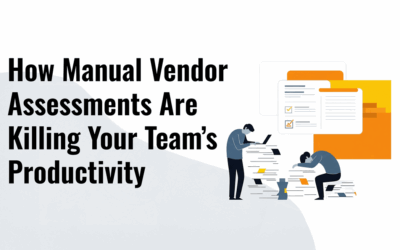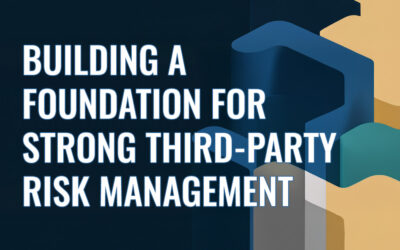This whole ordeal adds to the growing number of high-profile data breach lawsuits. Companies now face huge regulatory and reputation costs when their vendors’ security fails. The legal battle and settlement terms have created new standards that companies must follow for their third-party security protocols and monitoring systems.
This report analyzes the Orrick data breach timeline and the million-dollar settlement details. It explores today’s third-party vendor risk situation and offers applicable frameworks that organizations can use to boost their vendor risk management programs.
Understanding the Orrick Data Breach Timeline
The cybersecurity incident at Orrick, Herrington & Sutcliffe exposed a major security gap that lasted almost four months. Bad actors kept unauthorized access to the firm’s network from November 19, 2022, through March 13, 2023. The breach was discovered only after this extended period 1.
First breach detection and scope
The breach grew much larger than anyone expected. The law firm’s reports showed a dramatic increase in affected individuals. July 2023 saw 152,818 people affected. This number jumped to 461,100 in August and finally reached 638,023 individuals 1. The attackers targeted a file share with sensitive client data, which showed how vulnerable third-party storage systems can be.
Types of compromised data
The attackers got their hands on lots of sensitive information, including:
- Personal identifiers: names, addresses, dates of birth, Social Security numbers
- Financial data: account information, credit/debit card numbers, tax IDs
- Healthcare-specific information: treatment records, diagnosis details, insurance claims, provider information
- Authentication credentials: online account access details
Effect on healthcare clients
Healthcare organizations took the hardest hit from this breach. Several major healthcare providers fell victim to this attack:
- EyeMed Vision Care’s vision benefits plan
- Delta Dental of California’s insurance operations
- Various healthcare systems’ patient records 1
Healthcare data theft made everything more complicated. The breach triggered extra regulatory requirements under healthcare privacy laws. Medical information’s sensitive nature and possible risks to patient privacy made this situation even worse for healthcare clients 1.
Anatomy of the $8M Settlement
The federal court approved an $8 million settlement in November 2024 after several months of litigation 1. The settlement balances immediate payouts with long-term security needs.
Breakdown of compensation structure
Affected individuals can receive compensation at different levels:
- Documentation-based reimbursement up to $2,500 for out-of-pocket costs 3
- Time loss payment at $25/hour (up to 5 hours) 3
- Special damages reaching $7,500 with proof of extraordinary losses 3
- A flat $75 payment if you don’t claim other expenses 3
- California residents can get an extra $150 CCPA payment 3
Required security improvements
Orrick must boost its security measures by adding:
- Better detection and response tools
- Regular vulnerability scans across networks and applications
- New endpoint detection software
- Round-the-clock network monitoring by external vendors
Legal implications for affected parties
The settlement brings together all but one of these class action lawsuits in California Federal Court 4. Class lawyers will get $2 million (25% of the settlement fund) plus expenses up to $50,000 5. Each lead plaintiff receives $2,500 as service awards1.
Beyond money, Orrick must provide three more years of three-bureau credit monitoring services with $1 million identity theft insurance coverage 1. This approach helps with current damages and future protection, creating a model for upcoming data breach settlements in the legal field.
Third-Party Vendor Risk Landscape
Security experts have noted a concerning rise in third-party security incidents that has altered the map of risk management. A newer study shows that 98% of organizations work with vendors who have experienced breaches 6. The situation became more serious when 61% of companies faced direct third-party data breaches or cybersecurity incidents in 2023.
Current statistics and trends
Third-party risk severity has grown at an alarming rate. Breach incidents jumped 49% year-over-year and tripled since 2021. Data breaches remain the biggest concern for 74% of companies. Most companies assess only 33% of their vendors, which leaves significant blind spots in their risk assessment.
Common vulnerability points
Resource limitations and poor assessment practices create critical vulnerabilities in third-party risk management:
- Understaffing: 63% of organizations cite resource shortages as their main obstacle to TPRM program growth
- Assessment gaps: 50% of companies fail to categorize their vendors by risk level
- Monitoring deficiencies: 44% of organizations regularly audit their third-party data handling practices
Industry-specific challenges
Healthcare organizations face unique risks, with 35% of third-party breaches targeting this sector. The situation becomes more complex as 75% of third-party breaches focus on the software and technology supply chain 6. This creates significant challenges for healthcare institutions that manage extensive vendor networks.
Companies have started implementing more robust monitoring practices to address these issues. 51% of companies now have integrated resiliency plans for critical third parties. Looking ahead, 63% of organizations plan to combine external data providers with automation to improve their inherent risk assessments 7.
Building a Robust Vendor Risk Management Framework
A well-laid-out vendor risk management framework needs systematic ways to assess, monitor, and respond to incidents. Companies need resilient methods to handle emerging threats while optimizing their operations.
Risk assessment methodologies
Companies should use a tiered assessment approach based on how critical vendors are and their data access levels. Research shows that businesses with structured assessment frameworks can spot potential risks 89% faster than those using random methods. The essential parts of assessments include:
- Vendor profiling and inherent risk scoring
- Security control validation
- Compliance verification
- Financial stability evaluation
- Fourth-party risk analysis
The assessment should use standard questionnaires that line up with industry frameworks like NIST and ISO 27001. 73% of organizations report better risk identification when they use framework-aligned assessments.
Continuous monitoring strategies
Good monitoring needs automated tools and specific metrics to track vendor performance immediately. Studies show that companies using automated monitoring solutions can spot security incidents 28 days faster than those using manual processes.
The core monitoring elements should cover:
- External threat intelligence integration
- Security rating tracking
- Compliance status verification
- Financial health indicators
- Operational performance metrics
Companies need clear thresholds for each monitoring metric. Automated alerts should trigger when vendors drop below acceptable levels. Data reveals that 51% of companies with integrated resiliency plans for critical third parties face reduced incident effects.
Incident response planning
Recent events, like the Orrick breach, show why complete incident response planning matters. Companies must create vendor-specific incident response protocols that fit their security framework.
The essential elements of vendor incident response planning include:
- Communication Protocols: Clear channels and response times for vendor security incidents
- Containment Strategies: Quick actions to isolate affected systems and data
- Investigation Procedures: Steps to analyze root causes and assess impact
- Recovery Planning: Steps to restore services and recover data
- Documentation Requirements: Specific incident logging and reporting needs
Studies show that companies with documented vendor incident response plans cut breach costs by 38% and resolution time by 12.8%. Regular testing through tabletop exercises helps update these plans based on new threats and lessons from actual incidents.
Conclusion
The Orrick data breach and its $8 million settlement shows what happens when third-party security goes wrong. This case highlights how vendor vulnerabilities can expose sensitive data, trigger regulatory fines, and damage an organization’s reputation.
Standard vendor checks are no longer enough to handle today’s complex security threats. Your organization needs a flexible risk management system backed by continuous monitoring and resilient incident response plans to protect sensitive data and stay compliant.
Numbers tell the story clearly – 98% of organizations work with vendors who’ve experienced breaches, while third-party incidents jumped 49% from last year. Your security measures need immediate attention. A dedicated third-party risk management system helps evaluate vendors, spot weak points, and detect emerging threats. ProcessBolt’s risk specialists can show you how state-of-the-art attack surface monitoring and VRM solutions prevent third-party breaches.
Fill out the form below to be contacted by a risk specialist today.




